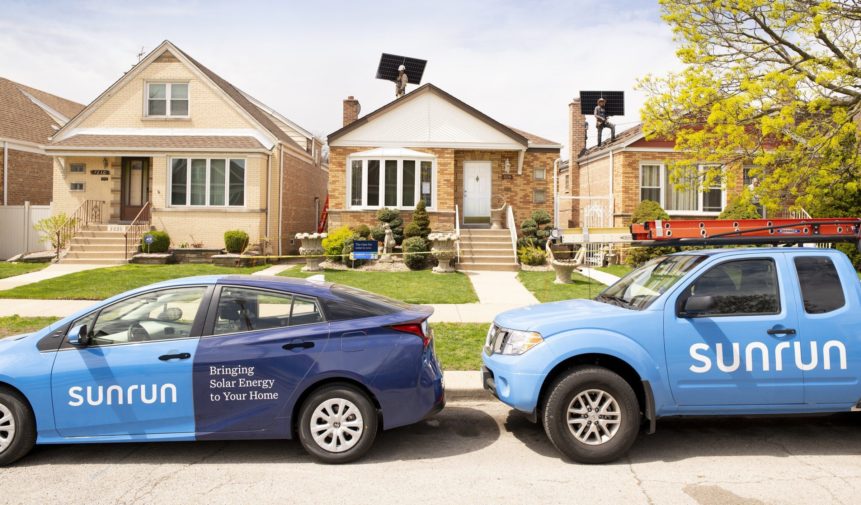Sunrun and GRID fight California blackouts with free batteries for low-income households

“Storage is critical for equity,” says Sunrun CEO Lynn Jurich — and putting more standalone storage on the grid means less electricity going through wires in wildfire-prone areas.

The announcement that Sunrun and GRID Alternatives are partnering to provide free energy storage systems to low-income residents in California’s wild-fire prone areas could not have come at a more critical or opportune moment. The state is reeling under the triple threat of wildfires, heat waves and the potential for rolling blackouts, with low-income residents most heavily impacted by all three but least likely to be able to afford backup power.
On its side of the partnership, top residential installer Sunrun will provide low-income homeowners with its Brightbox battery system as a standalone installation charged from the grid. The system uses the Tesla Powerwall battery — rated at 5 kW, 13.5 kWh — enough power to ride out an outage of several hours keeping essential lights and appliances on, and cell phones charged. Ten years of monitoring and maintenance will also be included.
The partnership’s first targets are the Los Angeles region and the San Joaquin Valley in Central California, areas where GRID has already begun working with community organizations on outreach to potential customers.
Installing standalone batteries is a first for both Sunrun and GRID, a nonprofit focused on bringing solar to disadvantaged communities, but also raises a tricky question. Why shouldn’t the nation’s top for-profit and nonprofit solar installers go for the far more resilient option of providing vulnerable, low-income customers with full solar and storage systems?
The answer lies in California’s battery incentive program, and its Equity Resiliency carve-out, which is being used to fund the free-battery offer. The generous incentive — $1,000 per kilowatt — can only be used for storage, and eligibility is limited to low-income residents in wildfire or outage prone areas, as defined by state criteria. According to the program website, state funding for the Equity Resiliency incentives through 2024 will total $612 million.
The grid benefits, too
“Storage is critical to energy equity,” Sunrun CEO Lynn Jurich said in the partnership announcement, pointing to the compound challenges low-income households face in keeping the lights on in emergency situations or extreme weather. A study from the California Energy Commission shows that low-income households in the state may spend three-times more of their income on energy costs than higher earners, yet be unable to afford air conditioning or heating. A prolonged power outage could also mean spoiled food and medications that are expensive to replace.
Responding to email questions from pv magazine, Sunrun laid out the larger, grid benefits of residential standalone batteries. At least in California, batteries charged from the grid during daytime hours, when solar output peaks, are still getting about 30% of their power from clean energy, essentially acting as mini-sponges to soak up excess solar power.
Storing energy where it is used also lowers risks for utilities and the communities they serve, the company said, flattening demand peaks so less electricity is traveling far distances over transmission lines in dry, wildfire-prone areas. California’s largest utility, Pacific Gas and Electric, only recently emerged from 18 months of bankruptcy caused by the steep liability damages the utility paid victims of catastrophic fires caused by its equipment in 2017 and 2018.
Despite its second quarter losses, Sunrun’s partnership with GRID — and foray into standalone storage — shows the company continuing to expand its position as the nation’s largest residential installer and exploring new options for growth going forward. In addition to its merger with Vivint, Sunrun also recently announced a joint venture with South Korea’s SK E&S to develop technology and systems for whole-home electrification.

